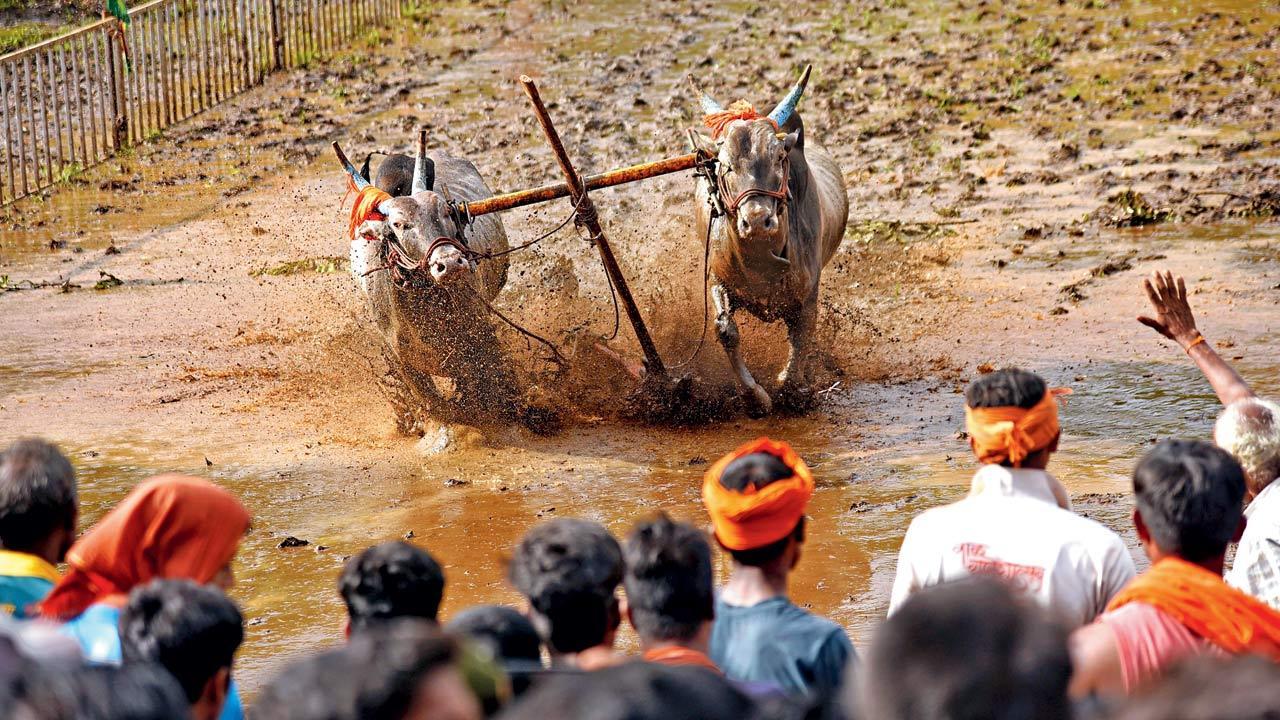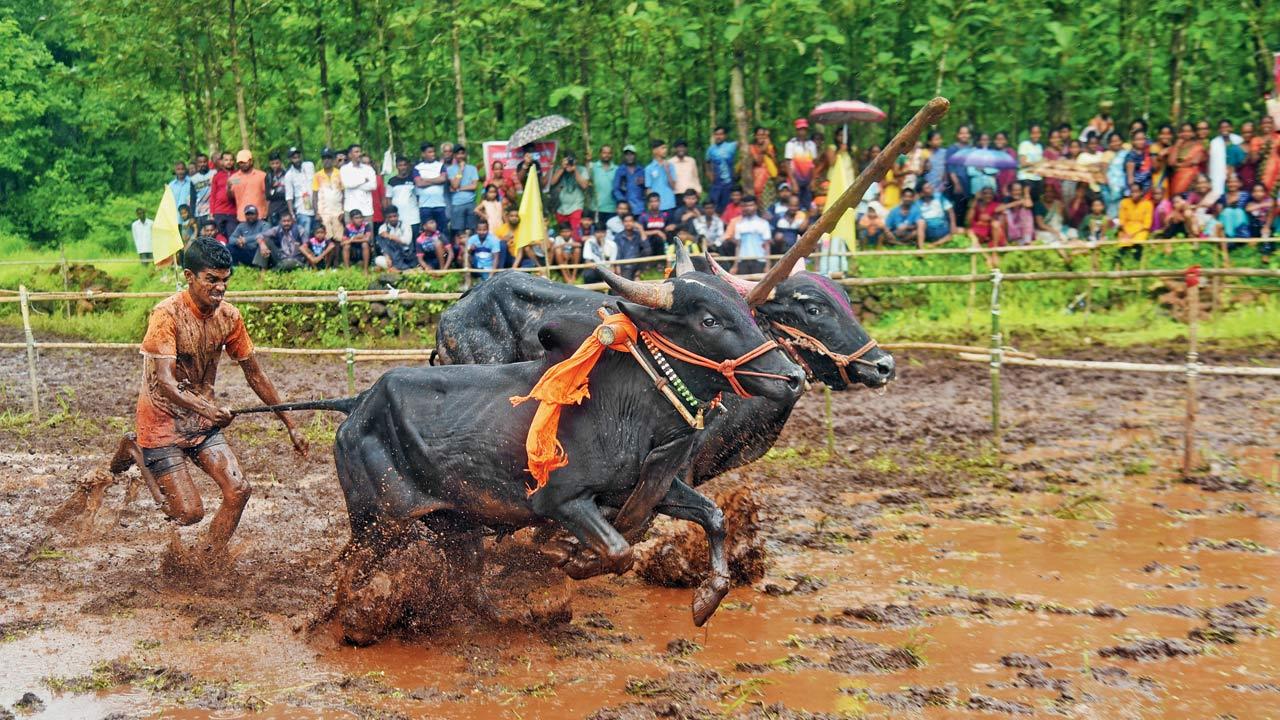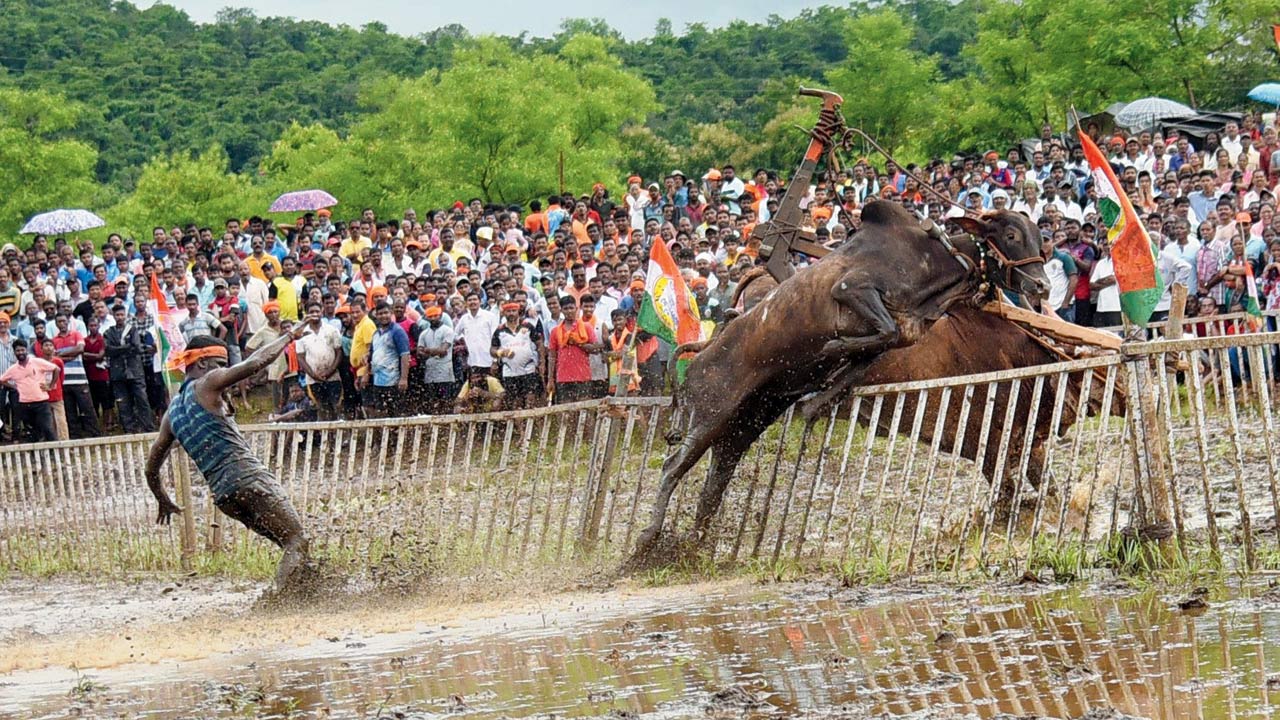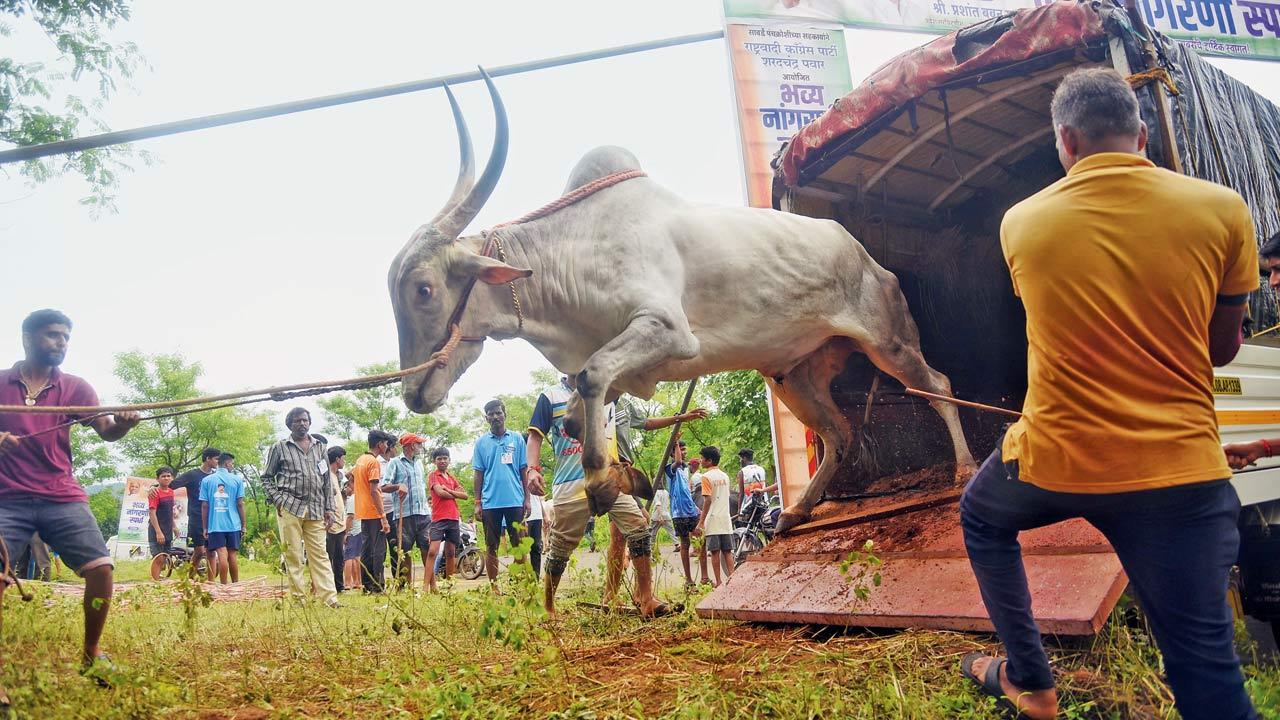Last week, Ratnagiri played host to traditional bull-racing festival, the Nangrani Festival. Lensman Pradeep Dhivar caught all the action as it happened

As Ratnagiri sees heavy downpour, Dervan and Sawarde villages in Chiplun taluka is just the right amount of muck to make the Nangrani bull race interesting. This race had 150 bulls from the district participating. This kind of competition is to highlight the importance of agriculture. Some local artists showcase their work at the venue
Villages and towns in Ratnagiri were emptying in 2011. Most farming tools, including the nangar (plough) lay unused, the land untilled and the bulls were sans their rage.
ADVERTISEMENT
 Children as young as 15 are allowed to participate in the amateur race on recommendations. This, says Gangrekar gives them encouragement to master the craft for when they can enter the professional competition at the age of 18
Children as young as 15 are allowed to participate in the amateur race on recommendations. This, says Gangrekar gives them encouragement to master the craft for when they can enter the professional competition at the age of 18
It was during monsoon that the farmers in Tambedi village had a thought: that the fleeing youth needed something to keep practising farming. Hence, was born the Nangrani bull race. Sunil Gangrekar of the Baliraja Shetkari Sanghatana from Sangeshwar, Chiplun, has been associated with the festival since its inception. “At the time, farmers and their children were moving out of villages and heading out to cities including Mumbai. This was emptying out our district and our region, known as the Annapurna of Maharashtra. The bull race was put in place so that the farmer doesn’t run out of the practice of driving the nangar and in turn, the soil is not left undisturbed for too long,” he says.
 The 50-km race is open for both amateurs and professionals and needs agility. The nangar is swerved to give the bulls direction, the farmer has to run at the same speed as the bull in order to not lose their grip over the nangar completely. Here, the Bulls jump over the race track barricade
The 50-km race is open for both amateurs and professionals and needs agility. The nangar is swerved to give the bulls direction, the farmer has to run at the same speed as the bull in order to not lose their grip over the nangar completely. Here, the Bulls jump over the race track barricade
The competition is divided into the professional and amateur categories. The former has a first prize of Rs 10,000, the second Rs 5,000, and the third Rs 2,500.
 Bulls are handled by experienced farmers. Those with less know-how are always accompanied by an experienced farmer. Bulls are moved via tempos and lugged into competitions; in order to avoid any injury, their stride is interrupted by holding a stick against their hind legs taking them off balance
Bulls are handled by experienced farmers. Those with less know-how are always accompanied by an experienced farmer. Bulls are moved via tempos and lugged into competitions; in order to avoid any injury, their stride is interrupted by holding a stick against their hind legs taking them off balance
Farmers from across the region come in to show their prowess with the nangar and for many, it becomes a great way to catch up with friends and family. When we ask Gangrekar why the race has grown massively, held every year on August 21 and 22, he says, “It’s because of the youth. The up-and-coming generation of farmers is interested in farming, they understand what it means to be able to grow and live off the land. The young farmers don’t want to let go of that knowledge.”
 Subscribe today by clicking the link and stay updated with the latest news!" Click here!
Subscribe today by clicking the link and stay updated with the latest news!" Click here!












